5 Questions for the Conductor of the World Premiere: Arndt Martin Henzelmann
Arrangements of Bruckner’s Te Deum and Mass in d minor
New arrangements of the Te Deum and the Mass in D minor by Sebastian Bartmann for the Bruckner anniversary in 2024: Both were premiered under the baton of Arndt Martin Henzelmann. Henzelmann now answers five questions about the new versions from the conductor’s perspective.
1. Bruckner’s Te Deum is perhaps his most famous work for choir and orchestra. Almost every choir singer has sung it or at least heard it, in the orchestral version, of course. How can singers break away from that well-known sound and adapt to such a different accompaniment consisting of two pianos and timpani?
In this context I think it’s very inspiring to consider the premiere of Bruckner’s work: the first performance of the Te Deum did not feature choir and orchestra. On the contrary it was a version for two pianos (by Josef Schalk) conducted by Bruckner himself, although only the introductory bars of this version have survived. Bruckner’s anniversary year in 2024 provided the impetus for a new version by Sebastian Bartmann, which revives the popular practice of the day of performing symphonic works with two pianos.
And then, just as with the popular version of the Brahms Requiem by Poos for two pianos and timpani, the smaller orchestration shifts the focus of the sound experience and allows for new possibilities. The work has more of a chamber music feel, seems more transparent; the choral sound is less obscured and thus appears more open. Nevertheless the two pianos provide enough support for a free and vibrant way of making music. The slimmed-down instrumentation also offers the possibility of a more flexible approach, not only as far as the dynamics are concerned, but also with regard to tempo, internal phrasing, agogics and interplay.
2. Does this “broken down” version perhaps allow some features to emerge which would normally not be heard?
As well as the scope created by the smaller “apparatus”, the repetitions on the pianos give the Te Deum greater clarity and rhythmic precision, for example. To a certain extent a new focus on the verticality of the composition emerges. I’m also excited by the thought that the choral writing as a whole moves more into the foreground and thus the choral sound itself as well. Now that there’s also a new option of performing the work with fewer singers, it may also acquire a “lighter” sound in the future.
3. The timpani is “ad lib”. What does this mean? Is doing without the timpani really an option?
Theoretically that is possible, of course. However Sebastian Bartmann and I recommend including the timpani which rounds out the aural spectrum through its depth and warmth. This is important specifically for the dark, romantic sound of the work. In a way the timpani is the symphonic support in the overall sound; the piano tone, which basically fades away, is underpinned and supported by the timpani rolls, many of which were composed by Bruckner himself.
4. Bruckner’s Mass in D minor is nowhere near as well-known as his Te Deum. Does that make it easier to approach the work in this new arrangement?
The fact that the work isn’t as well known as the omnipresent Te Deum offers opportunities for both performers and listeners. If someone first encounters the piece through the arrangement, s/he isn’t missing out on anything, but rather discovering the work with an open mind minus the burden of previous prejudices.
But I also firmly believe that people should never view new arrangements of older works through the prism of negative comparisons, trying to identify faults, but rather see them as musical enrichments offering new performance possibilities .
5. The Te Deum is known for its “broad brush”. The Mass is more contrapuntal, the instruments don’t make such a “blocky” impression; on the contrary, Bruckner displays an almost playful facility with colours. How does the arrangement manage to convey this?
The piano part cannot, of course, replace all the colours of the orchestra, but it can achieve colour differentiations with its registers, dynamics and allocation of parts. But above all, something new emerges: especially in the Mass chamber music qualities are revealed, which are emphasised by the two pianos. In particular, the distribution of the orchestral instruments across two pianos helps to highlight the contrasts much more clearly – also spatially – than if the reduction were for a single piano. The pianists have a special responsibility here to bring the structure and colours of the orchestral writing to life by the individual performance of each respective part.
Te Deum
Arrangement for soloists, choir and 2 pianos (arr. S. Bartmann)
Carus 27.190/44
Mass in d Minor
Arrangement for soloists, choir and 2 pianos (arr. S. Bartmann)
Carus 27.190/44
Arndt Martin Henzelmann is a freelance conductor and full-time lecturer in choral conducting at the Berlin University of the Arts. One focus of his work is in the field of choral symphonic music. He is assistant to the concert choir of the Staats- und Domchor Berlin and founder and director of the youth baroque project Collegium Vocale Iuvenum Köln. He also regularly conducts projects in the independent scene.

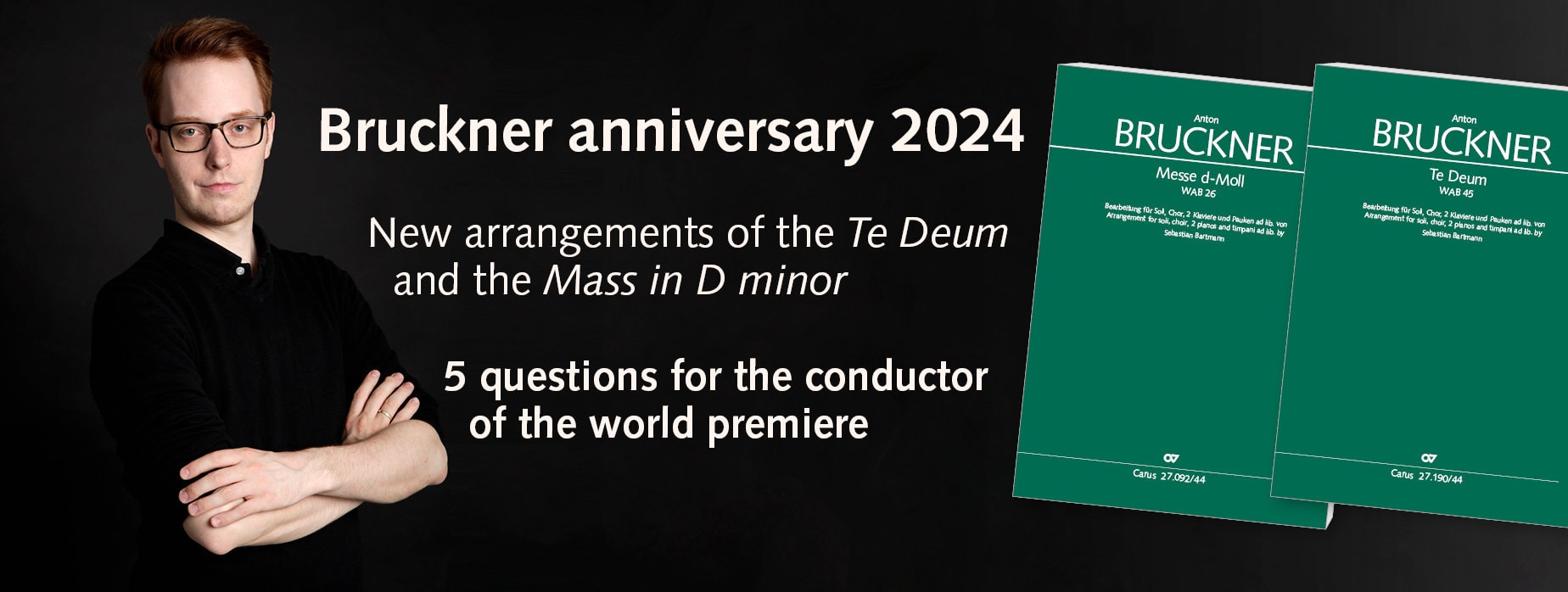
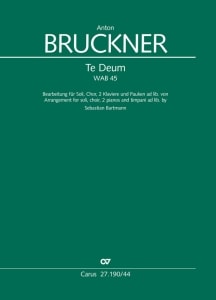
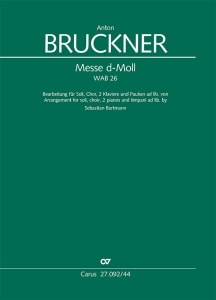

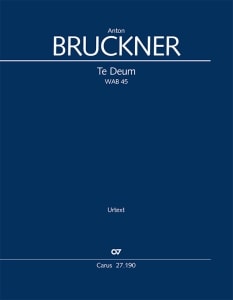
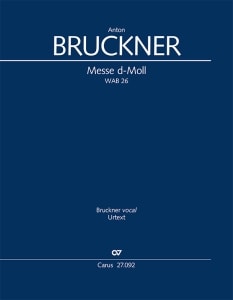
 © Sven Cichowicz
© Sven Cichowicz
Leave a Reply
Want to join the discussion?Feel free to contribute!